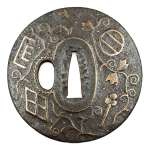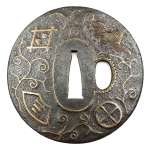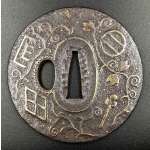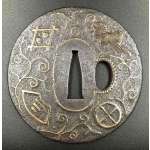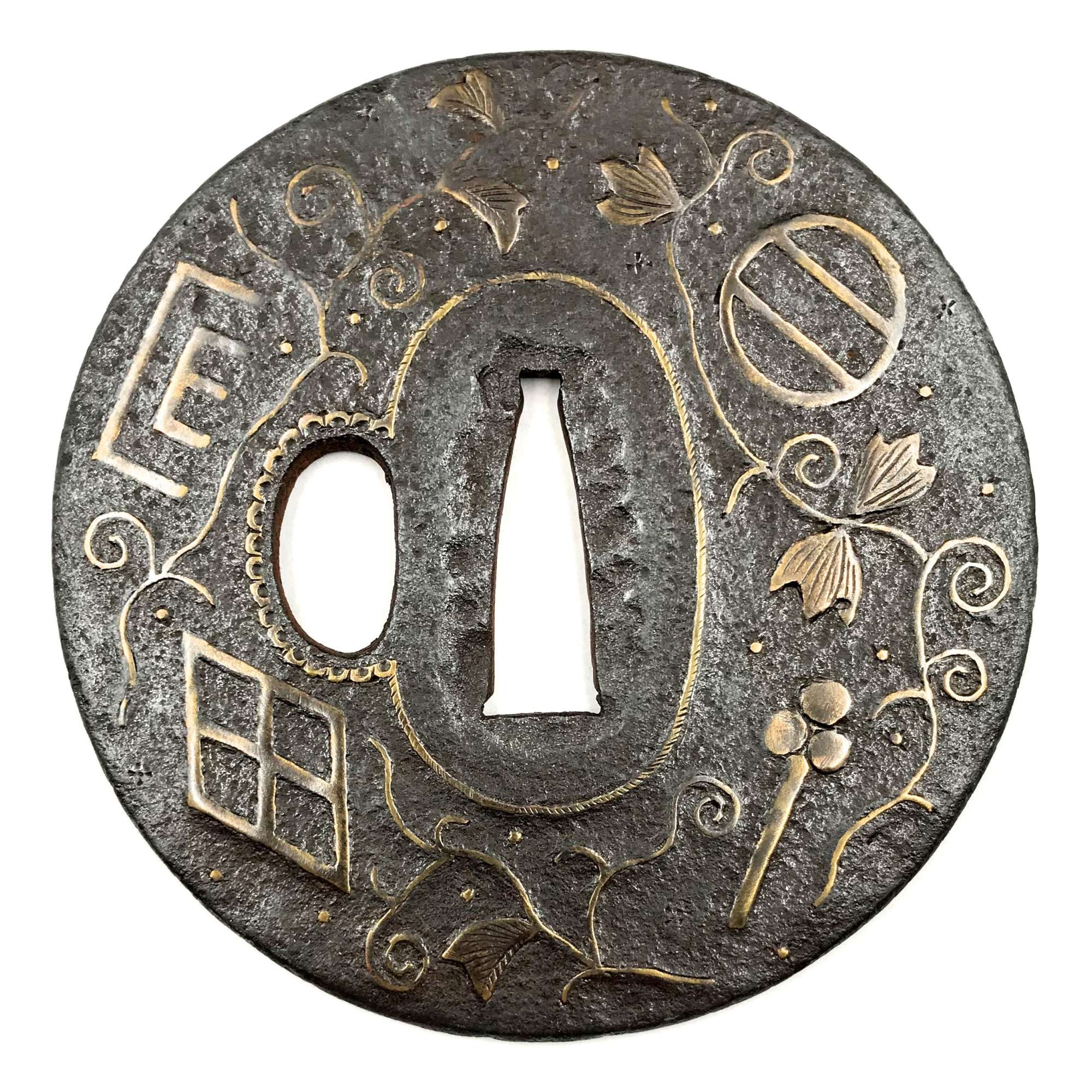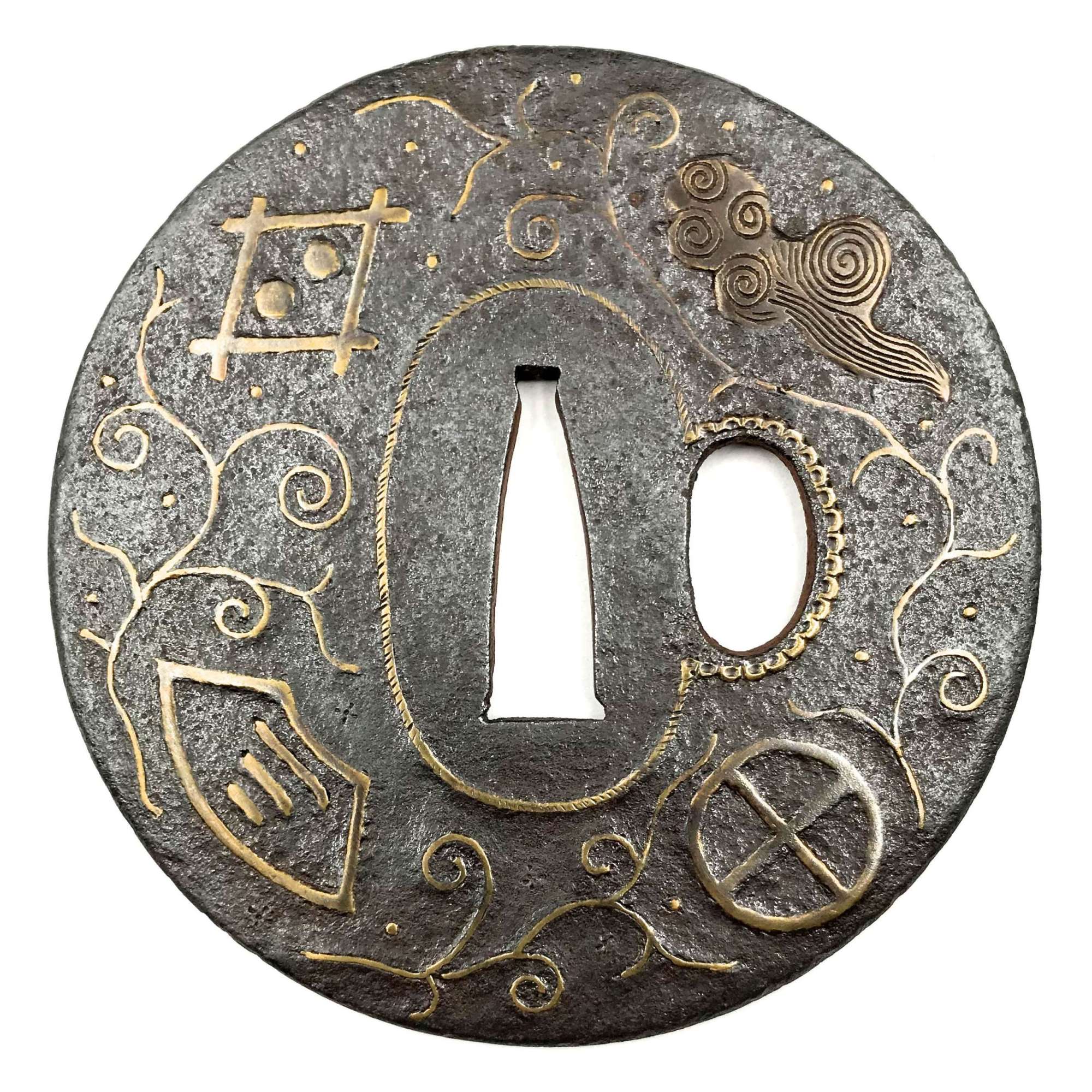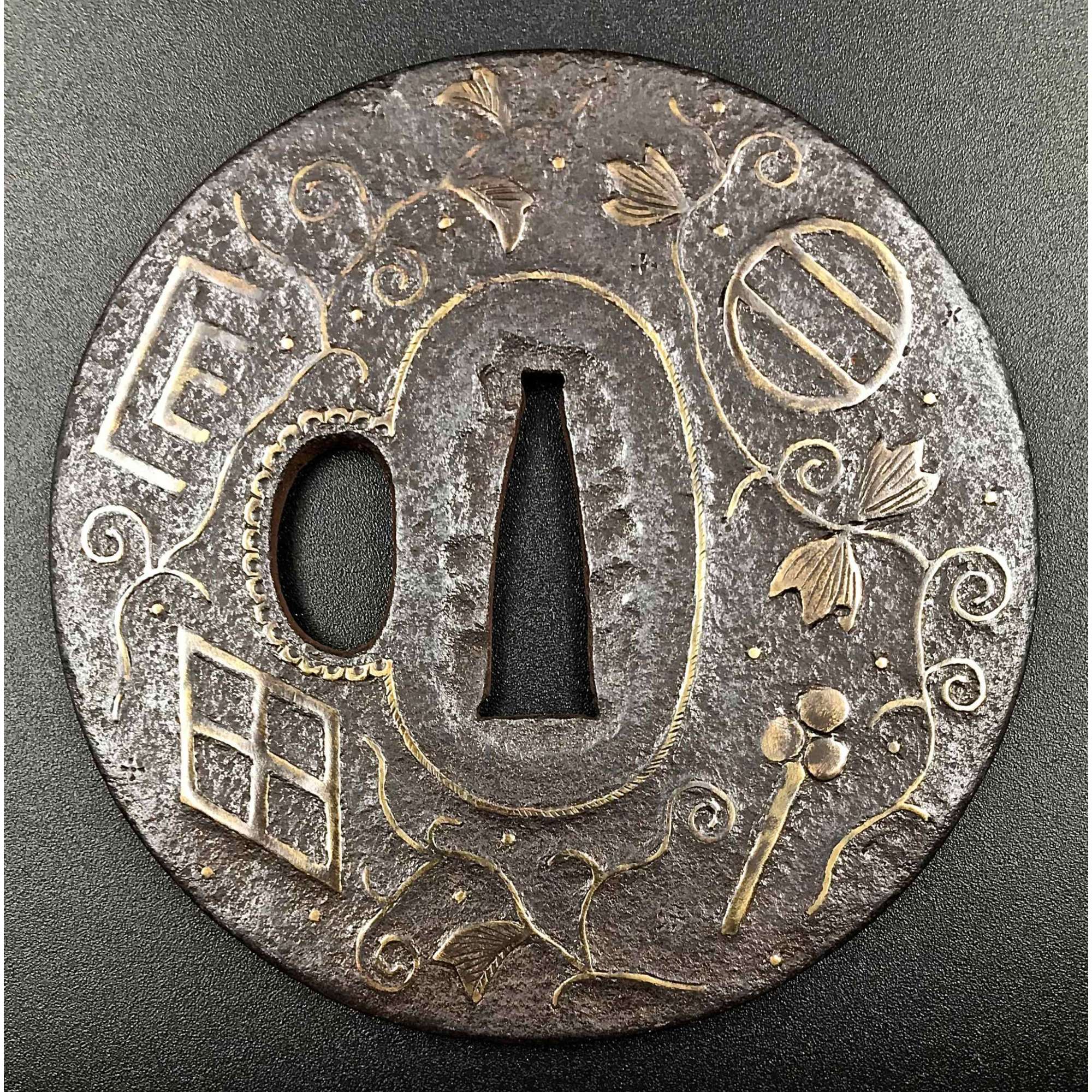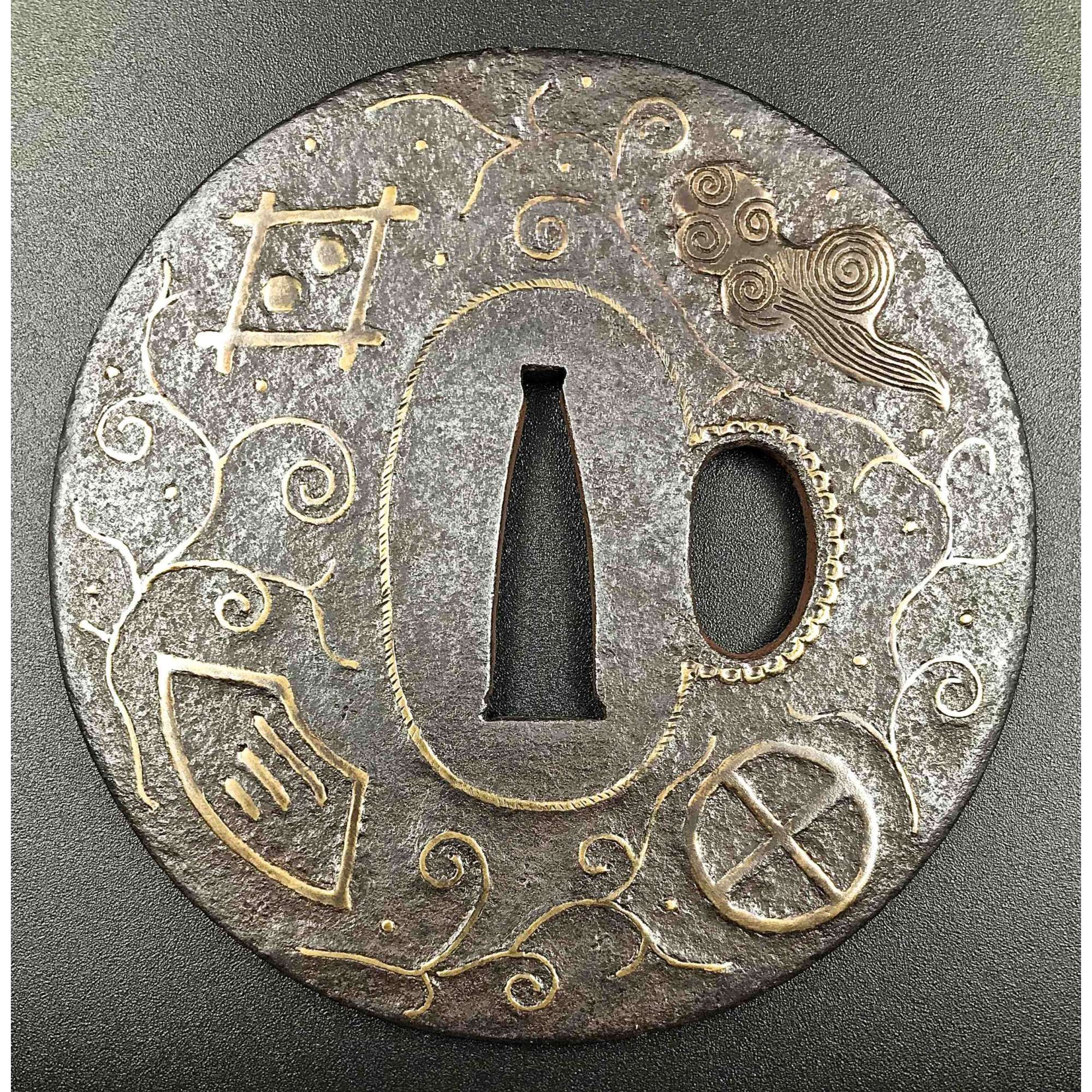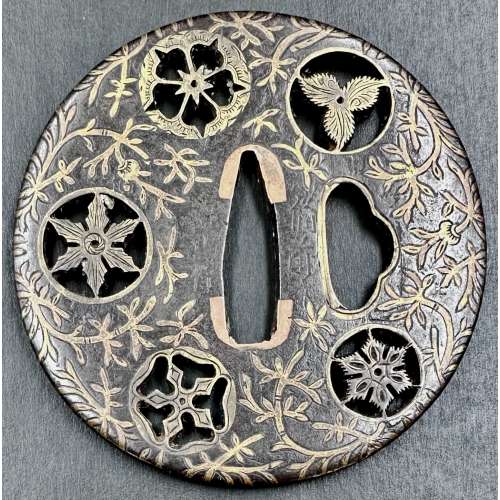Thin iron tsuba of round form with design of family crests (mon) and arabesque (karakusa) in brass or copper inlay (suemon-zōgan) and occasional scattered brass dots or nail heads in ten-zōgan. Seppa-dai outlined with brass wire in the shape of a rope; kozuka-hitsu-ana outlined with scalloped brass wire. Rounded rim with iron bones (tekkotsu). The surface covered with lacquer (urushi).
Ōnin school. Late Muromachi period, 16th century.
Family crests on the face:
1:30: Two lines (double stripe) encircled (maruni futatsu biki).
4:30: Stylized clove (choji).
7:30: Divided rhombus, or four lozenges incorporated in one (wari-bishi); it is also called Takeda-bishi, the family crest of warrior Takeda Shingen (among the others).
10:00: Stylized Genji-mon (Genji kō-zu) or incense symbol.
On the reverse:
2:00 – “Chinese cloud” not a crest.
5:00: Bit (Kutsuwa)
7:30: Number four in a fan (ōgi-san)
10:30: Two dots in a well frame (igeta).


